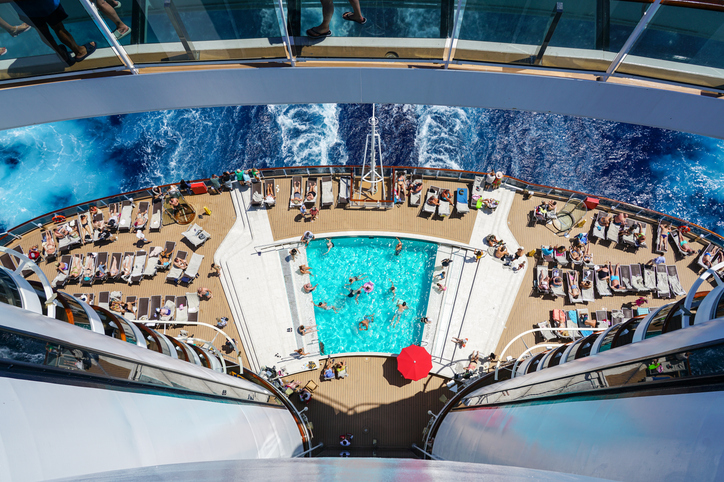
World’s Largest Cruise Ship Sets Sail as Industry Anticipates Record Travel in 2025
The cruise industry is no stranger to grand unveilings, but Royal Caribbean’s Star of the Seas has captured the spotlight like few vessels before it. The ship, which recently made its debut at Port Canaveral, Florida, now shares the title of the world’s largest cruise ship with its sister vessel, the Icon of the Seas. Together, these floating cities symbolize the industry’s rapid recovery and the growing appetite for vacationers seeking large-scale, all-inclusive travel experiences.
A Giant Among Giants
With more than 20 decks, capacity for over 5,600 passengers, and a suite of high-end amenities, the Star of the Seas is engineered to dazzle. Reports note that the ship includes everything from sprawling water parks to luxury dining neighborhoods, family-friendly activity zones, and even a production of Back to the Future: The Musical staged on board. According to Southern Living, the design reflects Royal Caribbean’s aim to outdo itself with each new release, creating not just a ship but an entertainment destination at sea.
The rise of these megaships demonstrates an industry trend: bigger is better. But it also sparks debates about sustainability, safety, and the long-term viability of such enormous vessels in an era increasingly focused on environmental responsibility.
Cruise Demand Is Soaring
The debut of Star of the Seas coincides with projections from AAA’s first-ever Cruise Travel Forecast, which estimates that 19 million Americans will board a cruise in 2025—up from 18.2 million in 2024. This domestic surge is part of a global rebound; international cruising already saw 31.7 million passengers in 2023, underscoring that the industry’s pandemic downturn is firmly in the rearview mirror, according to AAA Newsroom.
Cruise industry commentator Stewart Chiron, better known as “The Cruise Guy,” noted that bookings for 2025 are tracking ahead of all previous years. Destinations such as the Caribbean, Alaska, and Europe remain the top draws, as travelers seek both traditional itineraries and increasingly unique voyages.
The Other Side of “Cruisezilla”
Not everyone is celebrating the scale of ships like the Star of the Seas. Environmental organizations have raised alarms over what they dub “Cruisezillas”—ships that have doubled in size since 2000. Critics argue these floating resorts exacerbate overtourism in fragile destinations and pose significant environmental challenges, from carbon emissions to waste management. A report from The Guardian highlights how many port cities are struggling with the infrastructure strain of welcoming vessels carrying more passengers than the towns themselves.
Balancing consumer demand with environmental responsibility is now one of the industry’s greatest hurdles. While cruise lines are investing in greener technologies, including liquefied natural gas (LNG) propulsion and waste reduction strategies, critics argue progress has been incremental at best.
What’s Driving the Surge?
Several factors explain the cruise industry’s explosive growth:
-
Pent-Up Travel Demand – After years of pandemic restrictions, many travelers remain eager for convenient, all-inclusive vacation options.
-
Expanded Offerings – Cruise lines now market to every demographic, from young families to retirees. Ships feature dedicated zones for children, teens, and adults, allowing for multigenerational travel.
-
Price Appeal – Cruises remain cost-competitive compared to land-based resorts, especially when meals, entertainment, and transportation between destinations are bundled.
-
Experiential Travel Trends – Travelers are prioritizing experiences over possessions. Cruises deliver a sense of adventure while still offering the comforts of luxury accommodation.
These dynamics have made cruising a central pillar of the tourism industry and a lucrative segment for ports across the globe. Cities like Miami, Galveston, and Seattle have reported record embarkations, while smaller destinations grapple with both the benefits and challenges of welcoming these massive crowds, according to Travel and Tour World.
A Celebration—and a Caution
The celebratory headlines surrounding Star of the Seas are warranted—it is a marvel of engineering and a strong signal that consumer confidence in cruising has not only returned but surged. Yet, the industry faces legitimate scrutiny. Issues of passenger safety, environmental impact, and destination management will continue to shape public perception and policy.
Passengers may be dazzled by onboard thrills, but as with any large-scale enterprise, risks exist. From mechanical failures to health outbreaks and allegations of misconduct, the realities of life at sea can be more complex than glossy brochures suggest.
The Legal Dimension of Cruise Travel
The sheer scale of modern cruise ships means they are, in effect, floating cities—and like any city, they are not immune to crime. Incidents of cruise ship sexual assault, while statistically rare, remain a real and troubling concern. Victims and their families often face unique legal hurdles in pursuing justice due to jurisdictional complexities and the multinational nature of cruise operations.
That is why choosing the right legal support matters. For individuals who have experienced harm while traveling at sea, specialized attorneys can provide critical guidance. It is essential to know your rights and the avenues available for recourse—if you or someone you know has been impacted, don’t hesitate to Contact Brais Law Firm today.


